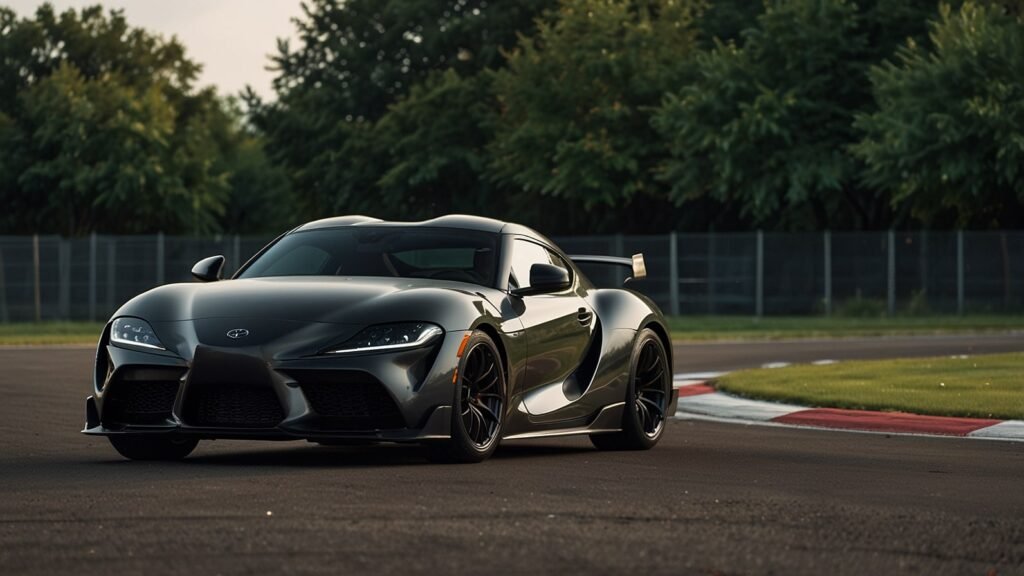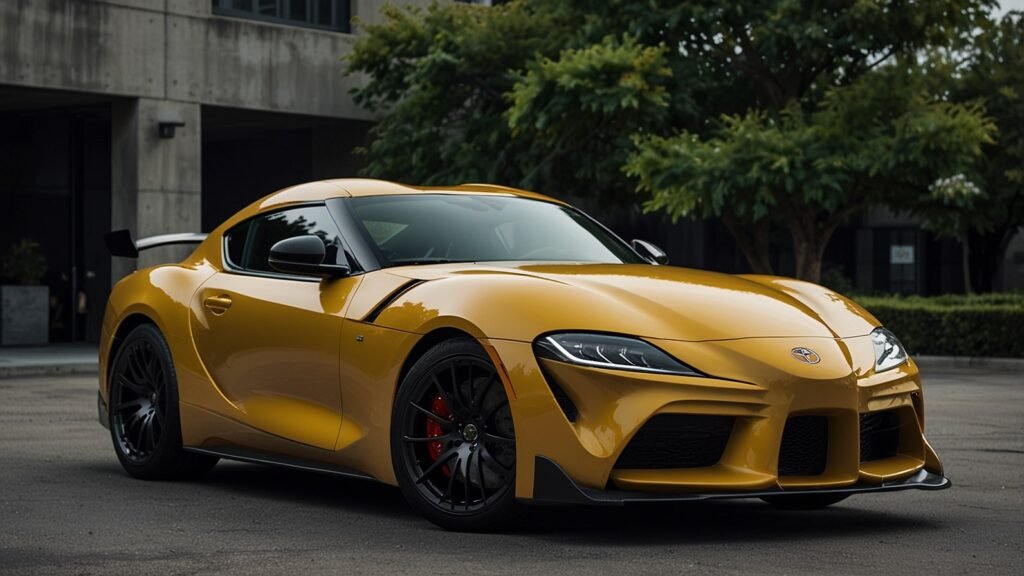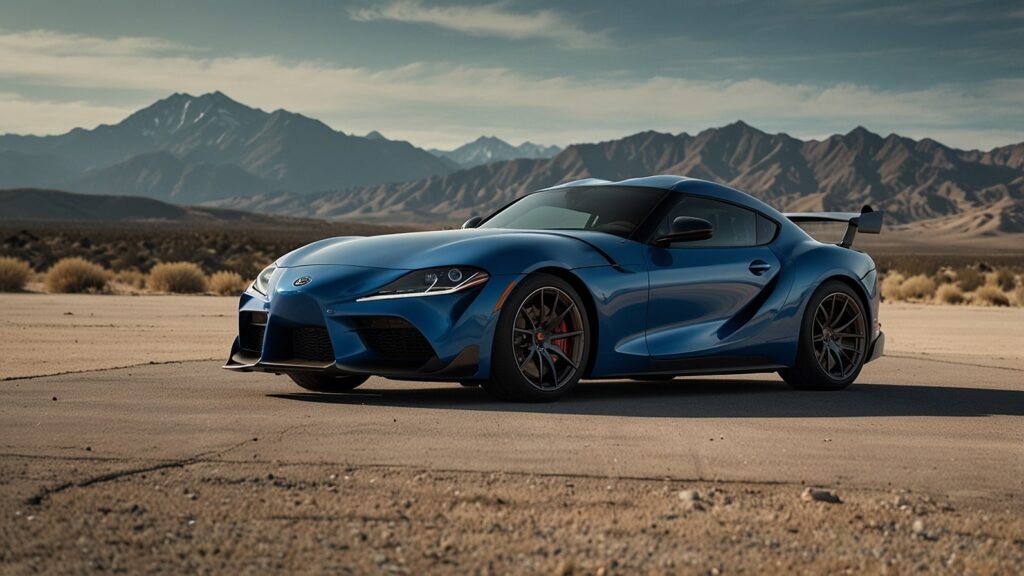
The automotive world is still abuzz with the Toyota Supra A90 Final Edition, an extremely limited edition of the car and the final production run of the ongoing fifth-generation Supra, released on September 16, 2025. This Final Edition is an appropriate swan song of the A90 that was introduced in 2019 in partnership with BMW as Toyota reaches a period when it will start focusing on electrification and next-generation performance automobiles.
Such high-profile stories as a dramatic rollover crash of a pre-production 2026 model days ago in Texas drive home the intensity of the model and the emotional significance of its imminent retirement. Although the crash demonstrated the strength of the Supra, although its damage was extreme, the structure of the chassis was highly rated by the auction professionals; the truth is that it was a time to rejoice.
Earlier in 2025, Toyota Gazoo Racing (TGR) introduced this special edition, combining race-ready features with the inline-six engine, which has marked the rebirth of the Supra. As the production ends at the beginning of 2026, fans are rushing to grab one of the limited number of units, as it is not only a car but also a collector’s item and will likely grow in value.
The Final Edition A90 comes at a time when there is a nostalgic feeling over pure internal combustion sports cars. The choice by Toyota to limit this chapter is not only of the industry in general, but also adds more enticement to the model. Based on the success of motorsport both in history and in the Supra GT4 race car, the Final Edition takes the limits of what the B58 engine is capable of. Looking at its price, specifications, top speed, and initial reviews, it becomes evident that it is not just a collection of trim levels, but rather the statement of the purity of performance by Toyota.
Unveiling the Specs: Engine, Chassis, and Track-Focused Upgrades
The central engine of the Toyota Supra A90 Final Edition is the standard but sophisticated BMW B58 twin-scroll turbocharged 3.0-litre inline-six engine. Standard Supra has 382 horsepower and 368lb-ft of torque, but the Final Edition cuts it in some markets. In the case of Japan and Europe, the output is increased to 429 horsepower and 420 lb-ft, which is made possible by ECU remapping, improved intercooling and improved fuel delivery systems.
This increase in power, 47 horses over the base model, makes the Supra more of a savage beast, and it is able to compete with entry-level supercars. U. U. consumers, however, are given the diluted version of 382 hp, which is a compromise given the emissions laws which has elicited some purist controversy.
The transmission options are all about involving the driver: the car has a six-speed manual gearbox with a rev-matching system to allow smooth downshifts. A non-Final Edition still has an eight-speed automatic, though Toyota opts to emphasise the stick shift here in order to pay tribute to the Supra with a stick. The driveshaft is rear-wheel drive throughout, enhanced by an electronically controlled, limited-slip differential that enhances cornering accuracy.
Massive motorsport-inspired alterations are made to the chassis. The KW adjustable dampers have 16 rebound levels and 12 compression damper levels that enable the owner to adjust them to suit the street or track. Body stiffness is enhanced by extra braces, stiffer rubber bushings and pillow-ball upper mounts on the front suspension.

Brakes are also upgraded to huge Brembo units: 19-inch drilled rotors with six-piston callipers in front (395 mm diameter) and four-piston callipers in the rear, which guarantee that none of the braking force is lost during extreme driving. Aerodynamics are inspired by the GT4 racer, including front splitter, canards, side sills, swan-neck rear wing and hood duct to provide additional cooling. Such components not only make the lift less effective, but also direct the air to the brakes and radiator, increasing the stability during high speed.
The performance package is completed with tires and wheels. The Final Edition rides on 19-inch forged aluminium fronts and 20-inch backs, with Michelin Pilot Sport Cup 2 tires- 265/35ZR19 front and 285/30ZR20 rear. These are semi-slick tires, which have a 10 mm larger rear contact patch when launching on the planted.
Interior options are Recaro Podium CF carbon-fibre bucket seats with red Accents and Alcantara inserts, red seatbelts, and GR-embroidered headrests. Carbon-fibre shifter knob and unique badge serve as a reminder to the drivers that the model is a rarity. The U.S. version achieves a respectable 22 mpg in the city and 29 mpg on the highway, a figure exclusive to the U.S. version of the car, which is known for being a potent sports coupe.
Pricing: A Premium for Exclusivity
The Toyota Supra A90 Final Edition is priced heavily because of its small quantities and expensive materials. The MkV Final Edition, in the United States, begins at $68,550, destination fees included – a $12,000 markup over the base 3.0 Premium. This makes it a competitor to other models such as the Chevrolet Corvette or the Porsche 718 Cayman.
Still, there is an added hint of shared-DNA mystery to the Supra due to its BMW roots. For individuals who will select the manual transmission, a minor fee increase will be applied, bringing the total price to approximately $70,000, with additional options such as high-quality JBL audio or the safety package.
In the foreign market, the price is inflated thanks to increased power output and carbon-fibre items. The A90 Final Edition is priced at around 15 million yen in Japan, which is around 100,000 USD in the current exchange rate. Starting at EUR142,800 or more than $155,000, the European models are badged the GR Supra A90 Final Edition and are the most expensive Supra ever.
The difference is based on import duties, the 429-hp tune, as well as on things that are not standard in the U.S., such as the KW suspension, which means that the quantity is lower in the U.S., which creates the scarcity, which leads to the demand. Already, resale prices are rising, and initial bids on community message boards are already at 20 per cent above the MSRP.
Top Speed and Acceleration: Benchmarking the Beast
A90 Final Edition performance is as high as it could be billed as the fastest production Supra made by Toyota. The 429-hp version has a 0-60 mph time of less than 4.0 seconds – Toyota boasts of 3.9 seconds with the manual – and will top speed of 171 mph (275 km/h), limited electronically through safety considerations.
This is quite a big boost over the standard Supra limit of 155 mph due to reinforced aerodynamics and tire ratings able to perform sustained high speeds. Times of just under 12 seconds can also be seen in the quarter-mile, and the launch control aided the explosive starts of the manual.
The U.S. car, which only uses 382 hp, replicates the base Supra’s 3.9-second 0-60 time with the automatic, albeit with a tenth or two seconds with the manual. Top speed is still governor-controlled at 155 mph, but in real-world use, magazines like Car and Driver have reached 168 mph on open race tracks.
Acceleration: To get down to 70 mph to zero is only 152 feet, thanks to the Brembo system, and the lateral pull is over 1.0 g on the skidpad. The figures make the Final Edition a track weapon, able to lap a circuit such as the Nurburgring as fast as more expensive exotics.
Reviews: Praise for Purity, Critiques on Cost
Reviews of the 2025 Toyota Supra A90 Final Edition have been very positive, with a large majority of them stating that it is the final and ultimate version of the A90. Auto Express described it as what the entry-level car should have been all along and complimented the chassis further, which provided telepathic handling and a forgiving ride on the public highway.
There is a balance in the KW dampers; it is firm yet forgiving, and the amount of torque delivered by the engine, with its peak of 4,500 rpm, offers hasty overtakes with ease. Top Gear found it nearly perfect, having been upgraded with more power and becoming a very real competitor to the BMW M4, with acceleration times under 4 seconds being felt in a visceral way by the precise shifter found in the manual.
There are critics who find faults. The interior is still too small for taller drivers, and the rear visibility is not good; the infotainment interface is also outdated, having been borrowed from BMW. WhichCar emphasised the high cost as a point of resistance and proposed aftermarket upgrades to a standard Supra as a means of getting the same performance at a lower price.
Lack of the full 429-hp tune in the U.S. attracts a slight criticism, with HotCars indicating that BMW refused to supply the S58 twin-turbo V6 of the M3/M4, on the grounds of direct competition. In spite of this, the tester of duPont REGISTRY praised the Final Edition by stating that it was a reminder of what was exciting in the analogue world in a full EV-based future world.
The forums of the owners are mirrored in professional sentiments, and early deliveries in Europe were scoring track days and glowing reviews. A reviewer on YouTube said it was the best production Supra because of the grip provided by the Cup 2 tires, and the support provided by the Recaro seats during hard cornering.

Limited Availability and Legacy
Having a worldwide manufacturing limit of approximately 600 units, divided into markets, the A90 Final Edition has already been sold in major markets. U.S. distributions are dying out, and deliveries begin later in 2025.
The approach taken by Toyota will make this model a classic of the future, similar to the Mk IV Supra of the 1990s. With a hybrid successor being hinted at, the Final Edition is the height of the A90 with its balance of Japanese dependability and German design.
To conclude, the Toyota Supra A90 Final Edition is a product of six years of development, with scalding performance, high prices, and fan attraction. No matter whether you are seeking the highest speeds on the Autobahn or reviews stating its status, this Supra ends on a high note. To collectors, as well as drivers, it is a chance to have a piece of history before the curtain comes down.

